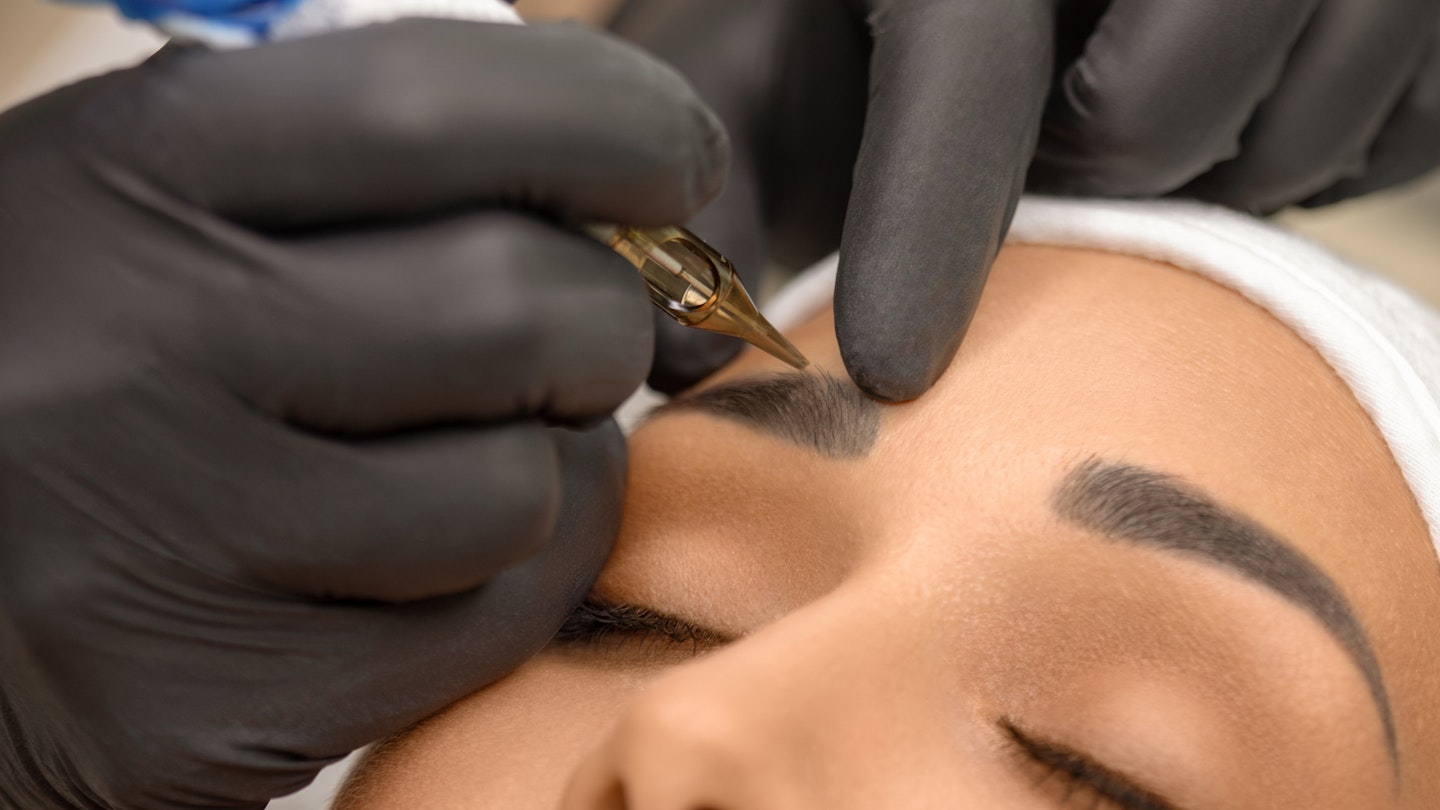Want to achieve Delevingne-esque brows? Enter Microblading: a semi-permanent brow technique promising natural-looking, fuller brows. Interested in booking that salon trip? We’ve answered all the questions you might have about this procedure - and debunked some misconceptions - so you can decide whether to blade or not to blade…
What is microblading?
Also known as eyebrow tattooing, feathering or microstroking, microblading is a form of permanent make-up. Like other traditional semi-permanent brow treatments, it uses fine lines of tattoo pigments to fill in existing eyebrow hair. Where this technique differs, though, is in its use of a manual pen-like tool with tiny needles, as opposed to a permanent make-up machine. The pigment itself is deposited into the dermis - or superficial layer - of the skin, which means that hairs can be drawn on individually., and with a greater level of control than with a machine. The result is a much subtler, more natural-looking finish.
Does it hurt?
Thought of a needle fill you with fright? Fear not. A numbing cream and liquid anaesthetic is applied to the eyebrow area before the needle gets to work, ensuring it a virtually pain free experience. The needles used are extremely thin in diameter, so shouldn’t cause any 'ouches' when applied by an expert. As Karen Betts, an authority on permanent make-up, puts it 'there's a tiny amount of discomfort but it wouldn't be regarded as pain, rather the feeling of small little surface scratches.' What’s more, the needles are single use, and the brow area will be disinfected beforehand for safe application. Phew.
How long does the treatment take?
One of the main sells of microblading is that it’s such an intricate process, so it’s no surprise to learn that one appointment typically takes around two hours. Speaking to InStyle US, microblading expert Nadia Afanaseva explains that ‘the first hour we’re drawing the shape in with removable pencil. That’s the longest and most important step.’ Your beauty therapist will also take the time to match the colour of the tattoo to that of your natural brows, and customise the hair pattern – which you’ll be able to approve of before they get to work to avoid any nasty surprises. The initial colour of your new brows will be darker than the eventual result, softening to a lighter shade after about two weeks.
Who should choose microblading?
While this may be a life changing treatment for hair loss sufferers, it can be used by pretty much anyone looking to boost or add shape to their natural brows. As Karen explains, it's great for everyone from 'those who don't want to fill in, shape and tint their brows every day, the physically active who don't want to sweat off their make-up, or those who have hair loss and thinning hair.' It’s also the perfect antidote to over-plucking, so, if you over-did it with the tweezers back in the ‘90s, it could be time to book yourself in at your local brow bar.
Is microblading only good for thin brows?
Anyone can get their eyebrows microbladed and it is especially good for those who want to fill in sparse brows. If you’re concerned about your brows looking fake, a lot of artists now offer combination brows which includes shading behind the hair-like strokes.
How much does it cost?
Available at a number of salons across the country, prices start from around £200. As it’s such a permanent solution, we reckon it’s well worth the initial expense – just think of it as an investment for your brows…
What’s the healing process like?
Nez Hasan eyebrow wiz says, 'you want to get your brows done 2-3 months before any big event to give your brows enough time to completely heal. You will have your initial appointment then 1 month later you will have the 1st top-up, where you will need at least 3 weeks to completely heal before you start applying makeup.' Although the process will vary from person to person). During this time, you’ll need to keep the area as dry as possible – brows can be coated with a protective layer of Vaseline while showering.
What aftercare is needed?
A huge bonus of this treatment is that unlike waxing, semi-permanent tinting or brow extensions, it’s incredibly low maintenance. It’s likely that your therapist will suggest a shorter follow-up appointment (as mentioned before), which allows them to fill in any remaining gaps and add a second colour to boost the shape and add dimension to the overall effect.
Karen states that 'aftercare advice is given on an individual basis after each treatment, but we produce our own soothing balm which we give to our clients to apply post treatment to assist with the healing. Before treatment we always carry out strict patch tests a minimum of 48 hours before treatment.'
And how long does it last?
On average, results last from 18 months to 3 years – so you can wave goodbye to that eyebrow pencil and look forward to shaving a good few minutes off your morning make-up routine. Win, win. After that, it’s likely your brows will need a colour boost.
Can microblading go wrong?
As long as you've done your research and sought out a well-trained, correctly certified technician, there should be no risks. As well as a patch test, Karen advises that a thorough consultation beforehand is essential, giving you a chance to discuss your expectations regarding shape and colour (because no one likes surprises, particularly not when they're tattooed on your face...) It's also worth double checking the training credentials of your therapist - Karen recommends taking a look at the artist portfolio and checking their work is all their own, rather than that of the company or brand they've trained with. And due to the longevity of microblading it isn't particularly ideal for someone who likes to change up their look frequently.
Main Image Credit: Getty Images

